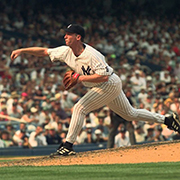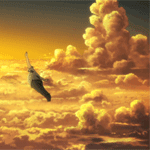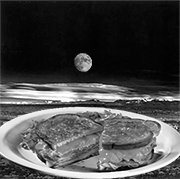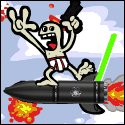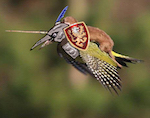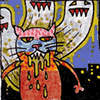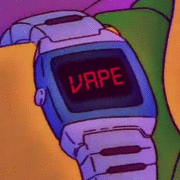|
VoodooXT posted:Looks like it worked. What was your dev time and dilution? 1+9 dillution, 1 minute agitation , 45 mins stand. This is in a SP445 tank. Gonna try the same location with a -1,+1,+2 and +4 stop and see what spread I get.
|
|
|
|

|
| # ? May 10, 2024 08:40 |
|
Blackhawk posted:Fingers crossed your work picks up after the pandemic my dude, I'm trying to make it as cheap as I can without also making it lovely. Thanks, I'm hoping work starts back up once the pandemic's over.
|
|
|
|
Blackhawk posted:The Chromabox is *very* different to any of the JOBO machines though, it's much more similar to the no-longer-produced phototherm, but with some significant improvements. joking aside, looks promising
|
|
|
|
Is doing 64bit scans in vuescan worth it? Iíve been able to piece together that the infrared channel has something to do with blemish isolation, but I still donít really understand its purpose. Also, better to convert negatives in post, or just let the scanner do it? I do have negative lab pro.
|
|
|
|
Stick to 48 infrared has to do with the automatic dust and scratch removal. it only works on color and slide film, it does not work on black and white. The various programs have different names but you will usually see ice or isrd. Your image quality will suffer a little bit. Convert negatives in post, your scanning should only be about geting as much information out of the negative as possible.
|
|
|
|
Wild EEPROM posted:Stick to 48 Nice. Thanks for the info. Another question: Using vuescan, the only way I see to digitize my negatives without conversion is to scan like I was using slide film. The Minolta software has an option to do B&W positive, but no such selection shows up in the vuescan menu. Any problems with this?
|
|
|
|
I don't know if this is the right thread, but I want to ask about DIY 35mm slide scanning using a DSLR and macro lens. The Scanner thread in the OP is closed down... I have color slides that are probably 15-25 years old, I think mostly Sensia and Velvia. At some point years ago I bought a dumb little scanner that outputs like 3mb jpgs onto a sd card. Hoping to improve on that. Can you get ok results doing this, or would I be much better served renting a scanner? My glass wasn't amazing back then so I probably don't need the 100% best solution, but at the same time, I don't want to make my bad pictures noticeably worse. Anyone have a favorite set-up? Seems like there are a lot of designs, some using natural light, some flash, etc... I just picked up a small Neewer light bank that seems like it might somehow work for a light source. Thanks!
|
|
|
|
President Beep posted:Nice. Thanks for the info. scan it as a positive (like slide film) and invert it yourself in photoshop
|
|
|
|
BetterLekNextTime posted:I don't know if this is the right thread, but I want to ask about DIY 35mm slide scanning using a DSLR and macro lens. The Scanner thread in the OP is closed down... I have color slides that are probably 15-25 years old, I think mostly Sensia and Velvia. At some point years ago I bought a dumb little scanner that outputs like 3mb jpgs onto a sd card. Hoping to improve on that. I used my ipad screen as a light table with a little homemade spacer using a glass plate and film canister lids for feet. If you put the negative right on the screen youíll photograph the pixels too. I hated it so much though, and if I have to go back to that for 35mm Iím gonna choke myself with a roll of ultrafine extreme. E: Iíll see if I can share a picture of it later. ansel autisms posted:scan it as a positive (like slide film) and invert it yourself in photoshop Cool, thatís what I figured. Thanks again!
|
|
|
|
BetterLekNextTime posted:I don't know if this is the right thread, but I want to ask about DIY 35mm slide scanning using a DSLR and macro lens. The Scanner thread in the OP is closed down... I have color slides that are probably 15-25 years old, I think mostly Sensia and Velvia. At some point years ago I bought a dumb little scanner that outputs like 3mb jpgs onto a sd card. Hoping to improve on that. If you have a lot of slides and you value your time and sanity,buy an epson v700 and the tray for slides. It will scan 12 slides at a time and you wont have to worry about any of the downsides of dslr digitization.
|
|
|
|
if you do not value your time but value quality, consider a plustek 8200ai
|
|
|
|
Wild EEPROM posted:... any of the downsides of dslr digitization. Is this just efficiency and fiddliness, or is there some ceiling in quality Iíd run into? Iíd guess it would be a few hundred at most. I wasnít planning to scan everything, just the most interesting.
|
|
|
|
BetterLekNextTime posted:Is this just efficiency and fiddliness, or is there some ceiling in quality Iíd run into? Iíd guess it would be a few hundred at most. I wasnít planning to scan everything, just the most interesting. I think opinions vary wildly about DSLR scanning, mostly because it depends what you have and what you want to do. I've only ever used DSLR scanning but I've read/watched a bit about flatbed scanning too and my comments are as follows: - DSLR scanning CAN give very high quality images from a resolution and sharpness point of view, especially for 35mm (the advantage drops off as you go to medium and large formats unless you take lots of photos and stitch them together) - DSLR scanning is 'quicker' than flatbed scanning in that taking a photo of a 35mm film frame is faster than scanning it for the same quality, BUT there's a lot of other effort that you have to go through with the DSLR method that easily eats up all of the time you gained - DSLR scanning of colour film is even more of a pain, the colour rendition quality and evenness of the light source that you're using to backlight the film is essential to getting usable images, cheap LED light sources tend to be missing huge chunks of the spectrum - DSLR scanning of colour negative film is an absolute bastard because of the inversion process, even nice plugins like Negative lab pro in my experience require a bunch of manual tweaking to get good colours, I hear that flatbed scanners are much much better for this. This is probably less important if all you ever want to do is slide film. - Flatbed scanners usually have an IR light source that can do dust and scratch removal, this only works on colour film but if your slides are all old and dusty and scratch this is probably going to be worth it - You can set the flatbed scanner up with a bunch of slides, push the button and let it do its thing while you have a coffee, using a DSLR requires you to manually run through each frame individually
|
|
|
|
President Beep posted:I used my ipad screen as a light table with a little homemade spacer using a glass plate and film canister lids for feet. If you put the negative right on the screen youíll photograph the pixels too. I hated it so much though, and if I have to go back to that for 35mm Iím gonna choke myself with a roll of ultrafine extreme. Gaze upon my works, ye goons, and despair (I know I do!)  
|
|
|
|
Thanks everyone. I'm going to give it a try with a DIY setup, but I appreciate the thoughts. Not sure I want to drop the cash on a scanner right now.
|
|
|
|
Fair warning: the dude with the video in youtube that says to just put a plastic shopping bag over your tablet screen is a god damned liar.
|
|
|
|
A USB powered LED tracing pad will run you about 20 dollars on Amazon, mine has been more than adequate for camera scanning. A good trick I learned was to use a small flat mirror (or in a pinch, a cd or dvd) to align the lens dead center for a parallel film plane.
|
|
|
|
I grabbed a 1-quart supply of Arista C-41 chemistry to attempt color film developing. Leave it to quarantine to finally take the plunge.
|
|
|
|
I'm going to use some of my Turmpbux to upgrade my scanner to an Epson v600 so I can finally scan my 120 film as well. I assume I should look into better software than the onboard epson software that I've been using on my v370?
|
|
|
|
Just use Epson Scan. Works well.
|
|
|
|
Yeah, use the Epson Scan software and turn off all the extra processing.
|
|
|
|
save vuescan for when you pickup one of those nikon coolscans
|
|
|
|
Vuescan is loving garbage on the coolscan. Even nikon scan is better. Source: i have a coolscan and an epson
|
|
|
|
just get silver fast, it's the best in my experience with all 3. vuescan loves clipping the blue channel.
|
|
|
|
Dudeabides posted:I'm going to use some of my Turmpbux to upgrade my scanner to an Epson v600 so I can finally scan my 120 film as well. I might upgrade to one of these in the future for the same reason. Currently using an old Minolta Dimage Scan Dual III. Is it safe to assume the newer epson will provide better (or at least not worse) 35mm scans? Not really aware of a good resource to compare scanners made so many years apart...
|
|
|
|
if you only plan to scan 35mm get a plustek
|
|
|
|
ansel autisms posted:if you only plan to scan 35mm get a plustek 120 as well. I'm still stuck using my digital camera for that 
|
|
|
|
So a serious question from a place of ignorance -- if I'm not looking for archival quality scans, would it be a mistake to think I can get good quality "scans" by just using a light table, film holder, and my full frame (or any other) DSLR on an inverted tripod? Like what would my major roadblocks to satisfactory results be here? I honestly don't know if that is a legitimate option or whether this is something that gets me laughed out of the thread.
|
|
|
|
Martytoof posted:So a serious question from a place of ignorance -- if I'm not looking for archival quality scans, would it be a mistake to think I can get good quality "scans" by just using a light table, film holder, and my full frame (or any other) DSLR on an inverted tripod? Like what would my major roadblocks to satisfactory results be here? For me it's just too much of a pain in the rear end. It's my understanding though that the images captured can be pretty drat good, matching or exceeding a lot of dedicated scanners.
|
|
|
|
Ah. Well I feel like I have all the basic elements already, and I can re-use the film holder from my old Epson scanner. To me it's just more of a pain in the rear end to find/install Epson software or VueScan when I can just adjust focus, take the snap, and do everything I need in Capture1 I've been meaning to get some old 645 off the strip and into my computer so I might give that a try.
|
|
|
|
Watch out for any light sources in your "scanning" area--they can cause a kind of reflection on the film surface and foul your shot.
|
|
|
|
I have some blackout material I can probably fashion into a hood. I'll have to try 3D printing a snap-on ring to interface the camera to the hood sometime this week.
|
|
|
|
it's a tremendous pain in the rear end even for regular rear end scans, and if you value your time and or sanity at all, a real scanner is what you need. if, instead, you would rather spend more money to get a worse result, then go for it
|
|
|
|
I mean I have literally nothing but time on my hands right now. Iím Fusion360íing a ring while on a Zoom call. Not much to lose 
|
|
|
|
DIY Slide scanner report: I made a super janky cardboard box that fits the slide holder from my old crappy scanner on one end and a hole that fits around the reversed lens hood my macro on the other , and the first thing I notice is OH MY GOD I FORGOT WHAT DUST LOOKS LIKE ITS EVERYWHERE AHHHH MY EYES. Now where did I put that blower? Still a lot more fiddling to do but I think this will end up working ok. e:  Horned LIzard first try on Flickr Horned LIzard first try on Flickr
BetterLekNextTime fucked around with this message at 21:58 on Apr 21, 2020 |
|
|
|
Hey guys. I'm looking at getting an enlarger and have found a Durst M700 with a CLS 70 colour condenser head for cheap with a modular negative carrier that does up to 6x9, it's got Setbox 66 condenser in and I've asked after the lens. Only issue is I have no idea what most of those words mean. Would this be suitable for black and white with that colour head, and would I need to change anything about the setup to do 6x9, what else should I be on the lookout for? Sorry about the vagueness as I don't know what I don't know about enlargers.
|
|
|
|
Got my v600 this evening. Apparently you get a free copy of Silverfast SE because Epson's newest software doesn't have the Digital ICE technology they advertise on the box. I'll have to see the differences in the two now.
|
|
|
|
Blackhawk posted:I think opinions vary wildly about DSLR scanning, mostly because it depends what you have and what you want to do. I've only ever used DSLR scanning but I've read/watched a bit about flatbed scanning too and my comments are as follows: This is pretty comprehensive. My two cents FWIW: I set one up at my old job; we had a lot of 35mm E-6 to digitise but it took forever to scan with the V700s we had (boss had to pay employees hourly, so "set and forget" not really an advantage, even when alternating between two scanners/machines). To streamline it, I bought an old slide duplicator - this makes loading the next slide much less fiddly than with a DIY holder. For the camera, I bought a cheap 3 way macro rail on eBay, which makes it much easier to get the camera in the correct initial position and fine-tune the focus (the 5D2 was also used for other duties so it couldn't be left there full time). For a lens we used an old manual focus macro with a 1:1 tube, on an adapter. We used a regular light bulb for the backlight - the slide duplicator had a diffusion panel integrated into it. Shot tethered, which allows you to check focus on the computer screen as well as use spacebar to take the shot. It worked brilliantly, I think I clocked it at like an 85% increase in productivity vs the flatbed. But it's a fairly narrow use case (35mm slides in good condition) - as Blackhawk has said, you don't get Digital ICE for dust/scratches, and getting the colours right with C41 is a PITA. Megabound posted:Hey guys. I'm looking at getting an enlarger and have found a Durst M700 with a CLS 70 colour condenser head for cheap with a modular negative carrier that does up to 6x9, it's got Setbox 66 condenser in and I've asked after the lens. Only issue is I have no idea what most of those words mean. Would this be suitable for black and white with that colour head, and would I need to change anything about the setup to do 6x9, what else should I be on the lookout for? Sorry about the vagueness as I don't know what I don't know about enlargers. I am just getting in to the world of darkrooms myself, so take this with a grain of salt. From what I've read colour heads can print B&W: some people like the process/setup like that, some don't. If it has a modular neg carrier that goes up to 6x9 don't see why it wouldn't print 6x9. Make sure the condensor has all of the lenses. Check the bulb for the enlarger as I've increased my setup's cost to me by 50% buying one with a dead bulb  Don't be too fussed about the lens (but do use it to negotiate on price if it's a cheaper brand) - if you are just starting out you'll probably make lots of mistakes, and even the "bad" ones are still going to probably look fine at 8x10. It is tempting to go out and buy a top of the line lens because they can be had for pennies on the dollar these days, but the advice I read was to just use whatever came with your enlarger (barring any serious flaws like haze or fungus) and wait for a stonkin' deal to come along on a nice one, assuming you've stuck with wet printing. You do want to be sure it's the right focal length for what you intend to print - probably 105mm for 6x9? Ethics_Gradient fucked around with this message at 04:01 on Apr 22, 2020 |
|
|
|
Ethics_Gradient posted:
Thanks for all the info. He's listing it as complete and 100% working ready to enlarge. Comes with 3 lenses and I'll be looking to enlarge everything from 35mm to 6x9. I'll be checking it out this afternoon and will report back.
|
|
|
|

|
| # ? May 10, 2024 08:40 |
|
Megabound posted:Hey guys. I'm looking at getting an enlarger and have found a Durst M700 with a CLS 70 colour condenser head for cheap with a modular negative carrier that does up to 6x9, it's got Setbox 66 condenser in and I've asked after the lens. Only issue is I have no idea what most of those words mean. Would this be suitable for black and white with that colour head, and would I need to change anything about the setup to do 6x9, what else should I be on the lookout for? Sorry about the vagueness as I don't know what I don't know about enlargers. Colour heads are just fine for B&W printing; I enjoy using my colour head (its got a faked up 3d printed mixing box and still works fine) a lot more than the black and white head as I can just turn a dial for contrast filtration instead of loading and unloading a filter tray and it offers the same contrast range (at least on my Omega c760 head). I would make sure that it comes with the condensers needed to print the sizes you want to print. Chances are pretty good it needs a different arrangement of condenser lenses to print different sizes. On my c760 I need to add an extra lens to print 35mm. Same with the negative carrier; is this some deal with sliding borders you can size to your negatives? If not what would you end up paying for additional negative carriers for the negatives you want to print? Does it need a separate power supply and does it come with it? Is it a colour head with dichroic filters you select with a knob (good!) or some tray deal you need to load (annoying)? Is the enlarging lens mount M39 (nearly all lenses use this) or some bizzaro proprietary thing that needs mounting hardware? High quality enlarging lenses are cheap in photography dollars if you stay away from the absurd APO lenses. Sauer fucked around with this message at 04:43 on Apr 22, 2020 |
|
|



